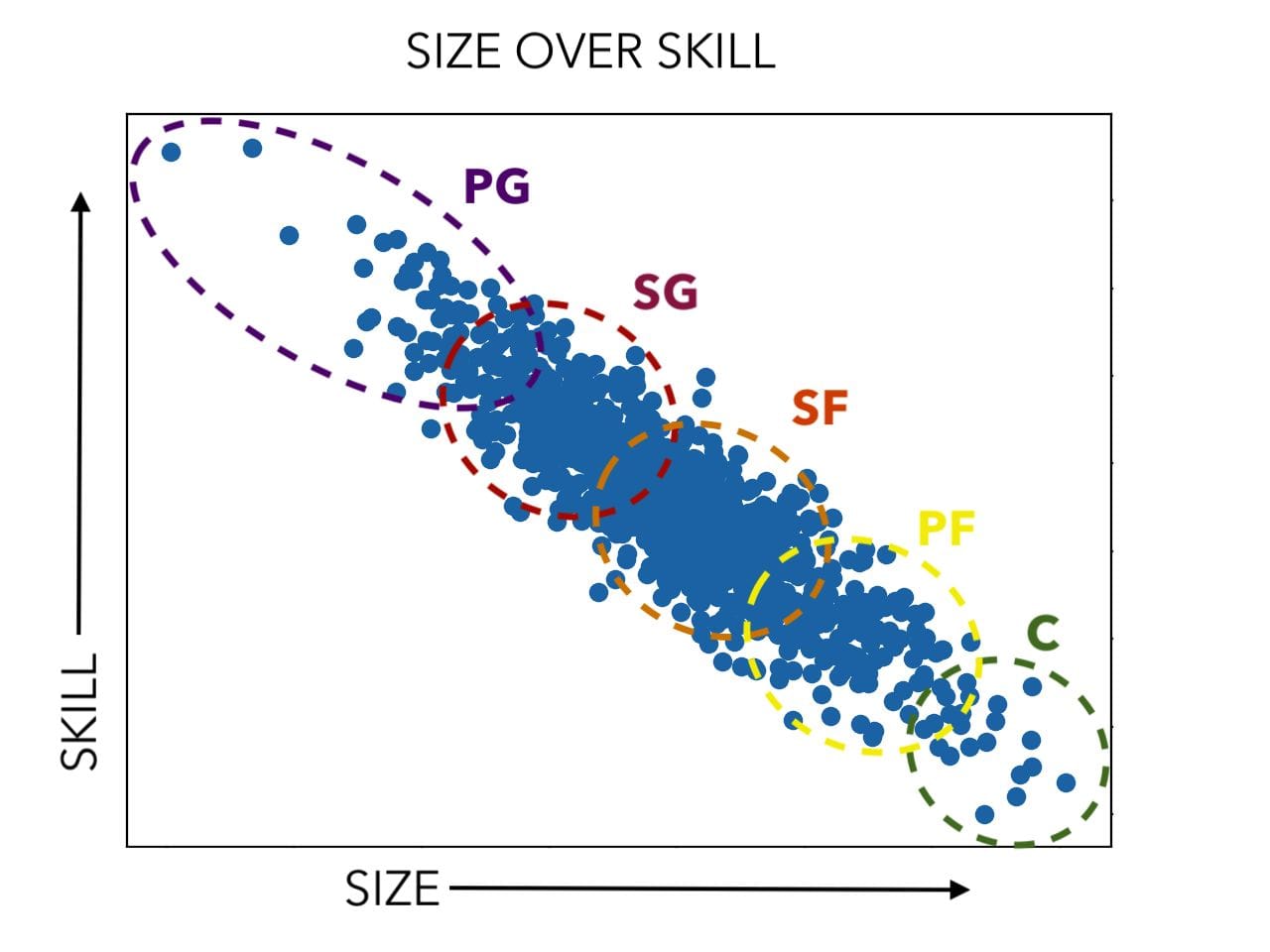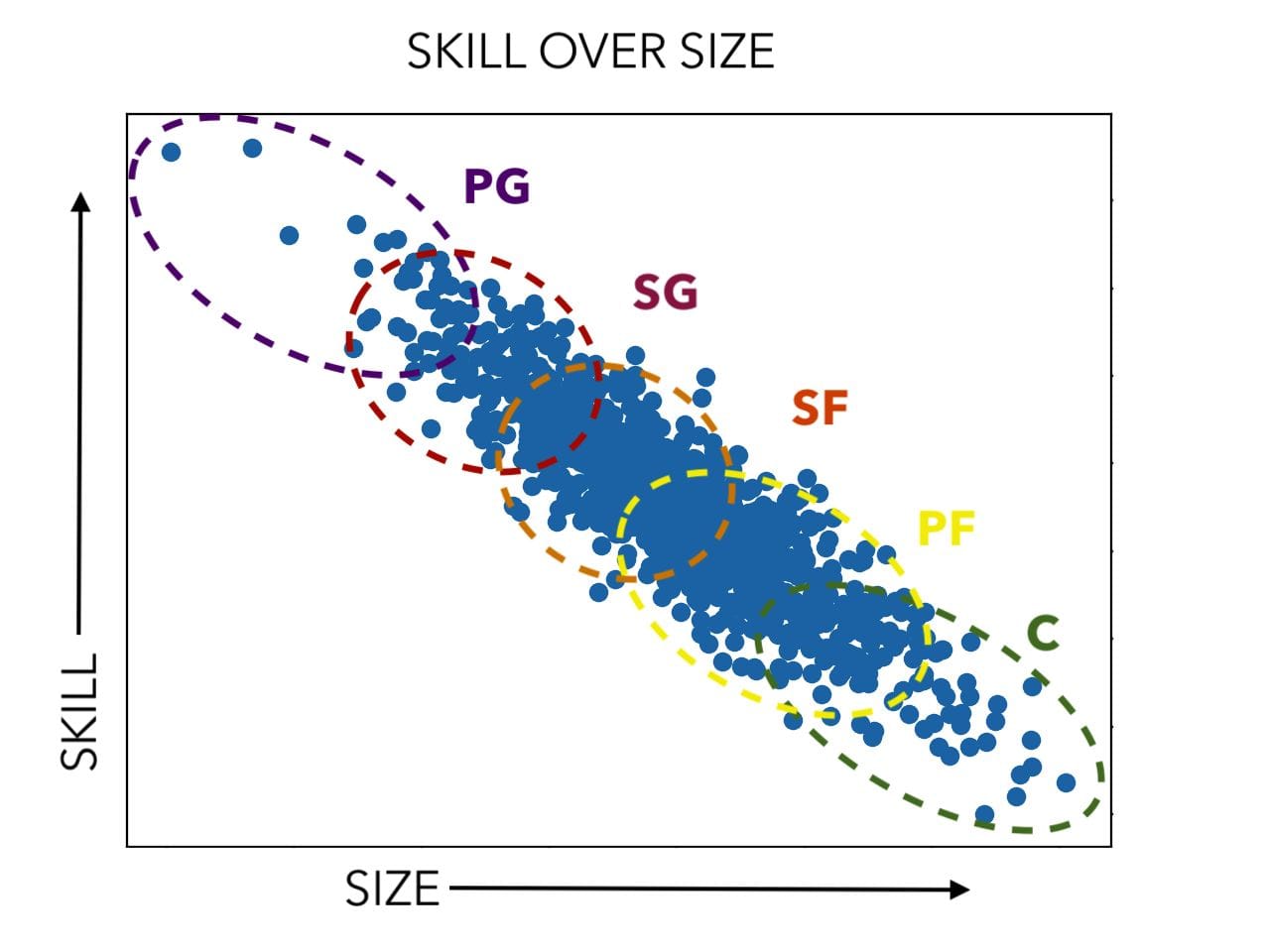The Whiteboard is The Step Back’s daily basketball newsletter, covering the NBA, WNBA and more. Subscribe here to get it delivered to you via email each morning.
Giannis is far from the first NBA player to add fluidity to the positional spectrum with a special composite of size and skill. Big men shooting 3-pointers had long since become the norm but we’re seeing more and more players 6-foot-10 and taller work as offensive fulcrums (Nikola Jokic), create for themselves off the dribble (Kevin Durant) and bring the ball up the court for their teams (Ben Simmons).
The way we talk about these players has been mostly been by expanding our definition of the traditional positions to make room for these outliers. But Giannis is somewhat unique in that, for a good portion of his career, we (fans and media) have stuck to traditional labels and heuristics more with him than with some of his peers.
Giannis Antetokounmpo used to be a point guard
For most of his career, Giannis has been the primary creator and initiator for Milwaukee’s offense. And for at least a while, he was handled with traditional labels. Late in the 2015-16 season, then Bucks’ head coach Jason Kidd made it clear that Giannis was going to be the Bucks’ point guard moving forward.
Basketball-Reference’s position estimates listed Giannis as a point guard for that season but would list him as a small forward the following season. He was listed at small forward as a rookie, and at shooting guard his second season. They’ve listed him at power forward for the last four. The changes from year to year speak to the classification-busting uniqueness of Giannis’ game but the point is we’ve tried to put traditional labels on him. And the ways those labels have changed probably says more about us than it does about him.
From February on in that 2015-16 season, the stretch in which Jason Kidd and the rest of the basketball world reached an agreement on him being a point guard, Giannis posted an assist percentage of 28.1 percent. On average, he had the ball in his hands for about 5.7 minutes per game and dribbled the ball an average of just over three times per touch. This season, as a power forward, Giannis posted an assist percentage of 28.2 percent. He had the ball in his hands for about 4.6 minutes per game and dribble the ball an average of 2.8 times per touch. Jrue Holiday brought the ball up the court a bit more and some of Giannis’ touches might have come in different places on the floor but it’s hard to see what changes in his on-court performance correlate with moving three spots up the positional scale.
Why is Giannis considered a power forward or center now?
One of the big differences that explain the change in positional designation is the rest of the players on the court. In 2015-16, the Bucks’ roster included three centers (or center-ish bigs) — Greg Monroe, Miles Plumlee and John Henson. Giannis played just 31 minutes all season (out of 2823) without at least one of those other bigs on the court.
This season, the Bucks’ roster included just one center-ish bigs — Brook Lopez, who is much more perimeter-oriented than any of the bigs he played with in 2015-16. Giannis played nearly a third of his regular-season minutes and more than 40 percent of his playoff minutes with Lopez. In the NBA Finals, more than half of his minutes came without Lopez and he was the primary defender on Phoenix’s center Deandre Ayton for nearly a third of Ayton’s offensive possessions.
Essentially, even though he’s playing an extremely similar role on offense, Giannis has become a big man by default. Over the years, the Bucks have progressively surrounded him with more perimeter, asking him to pick up some traditional big man responsibilities and intentionally forgoing others as part of their structures on offense and defense.
How does the positional evolution of Giannis reflect league-wide trends?
Circling back to the larger trends, I think Giannis is such a perfect exemplar because the perception of him has slid from one end of the positional spectrum to the other in the span of five years even though his role in a vacuum hasn’t really changed that much. What has changed is the team’s approach, how they use his abilities and the personnel and systems they put around him. All that is indicative of a change in the way I think teams are looking to exploit advantages.
The old paradigm, the one Giannis began his career under, viewed size as the primary advantage to be exploited on the basketball court. If you had a player like Giannis, with the size of a big but the skills of a guard, the conventional wisdom was to try and move them down the positional scale as far as their skill would allow. If you could make it work with a 6-foot-11 point guard, you were leveraging a huge size advantage over everyone else at that position. And that thinking stretched to every position, it made it seem reasonable to try and play Andrea Bargnani or Charlie Villanueva as a small forward, and over-emphasize the value of pure height when it came to centers.
I tried to capture this idea in a generic scatterplot (the points here don’t correlate to actual players, just hypothetical combinations of skill and size). Generally, as size increases, skill decreases and teams would try and stretch their positional designations as far as they could across the horizontal axis.

But the thinking on this seems to have changed completely. There was no single flashpoint for the change but the Warriors’ Death Lineup with Kevin Durant and Draymond Green as the two bigs may be the best example of things moving in the opposite direction. Increasingly, teams are looking to leverage skill advantages instead of size, stretching positional groupings as far up the vertical axis as possible.

Now the prevailing wisdom is to get as much skill as you viably can out of the center and power forward positions. It’s why teams are suddenly okay with the idea of 6-foot-7ish guys like P.J. Tucker, Robert Covington, Larry Nance and Julius Randle playing so many center minutes. Think of Giannis as a static point on the plot above. His location hasn’t moved in the past five years. But the style of play the Bucks and teams around the league are using has changed dramatically, which means we’re drawing different circles around his location.
Giannis was a point guard. He won a title as a power forward and there’s a chance he’s considered a full-ish-time center at some near point in the future. But that’s about us, not him.
#OtherContent
At 538, Jared Dubin breaks down what it means when a young player looks too good for the competition at NBA Summer League.